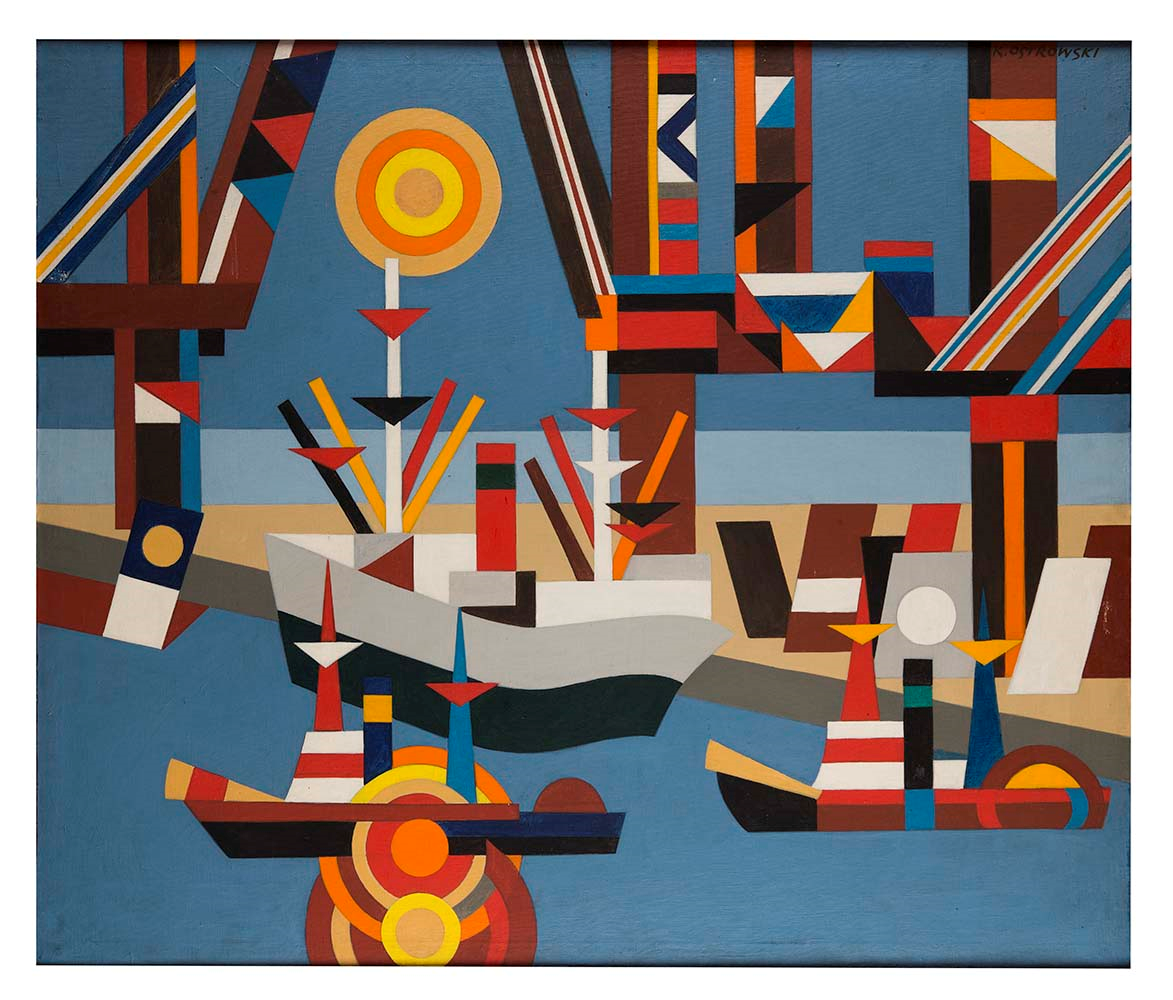
SEA \ CITY \ PORT
Opening: 10 II 2022, godzina 13:00
Exposure time: 11 II 2022 – 5 VI 2022
Partners: Muzeum Marynarki Wojennej, Narodowe Muzeum Morskie w Gdańsku, Muzeum Narodowe w Gdańsku, Państwowa Galeria Sztuki w Sopocie
Media patrons: Dziennik Bałtycki, Morze, Polska Morska, TVP Kultura, Radio Gdańsk, TVP3 Gdańsk, Trojmiasto.pl
In 1922, Sejm adopted a new act on the construction of the port in Gdynia. It resulted in the construction of one of the most modern ports in Europe and a city. The wave of enthusiasm after regaining the access to the sea as well as huge port investments were the reason why Polish art connected with the sea was born.
For a hundred years, the artists have been intrigued by the images of Gdynia’s “God’s Cove” – the place where “civilisation has penetrated into primordial nature”. In the interwar period, this space electrified people with the dash of the investment, the scale of the project, unknown technologies and modern architecture. A visit to the Polish coast and the port were a magnet for many Poles. The national dream of marine power feed the artistic inspirations too. After World War II, the issue did not lose its significance. Unconventional or even daring views of the port prove that the subject of the sea and the seaside architecture intrigued many artists. Various pieces were produced: from realist masterpieces by eminent seascapists like Marian Mokwa and Antoni Suchanek, through impressionist interpretations by Włodzimierz Radziszewski, to abstract compositions by Kazimierz Ostrowski. At the same time, their message remains so clear, that a keen eye will easily notice distinctive forms and breakthrough events.
Today, the audience is meeting this fascinating tale of the sea, Gdynia and its port face to face.
Most of the exhibits come from the Gdynia City Museum’s collection. The exhibition is complemented by pieces borrowed from the National Museum in Gdańsk, the National Marine Museum in Gdańsk, the State Art Gallery in Sopot, the Port of Gdynia Authority S.A. as well as private people.

